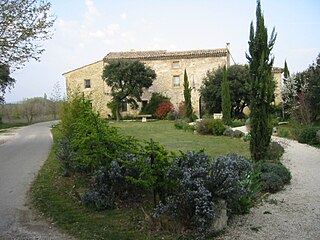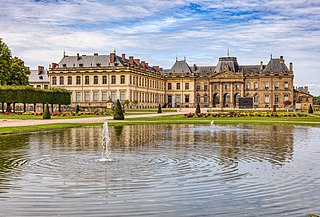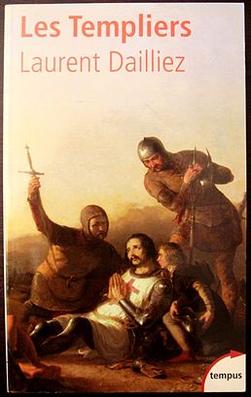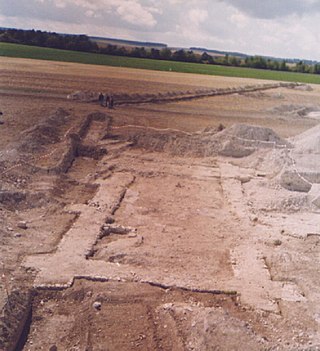
Argentan is a commune and the seat of two cantons and of an arrondissement in the Orne department in northwestern France. As of 2019, Argentan is the third largest municipality by population in the Orne department.

Luz-Saint-Sauveur is a commune in the Hautes-Pyrénées department in the Occitania region of south-western France. It lies on the river Bastan, a tributary of the Gave de Pau. Its inhabitants are called Luzéens and Luzéennes in French. The town features locations of historical heritage such as the church of Saint-André, also known as "Les Templiers", the Château Sainte-Marie or the spa district. Protected by mountains to the east, west and south, and separated from the plain to the north by the Pierrefitte gorge, Luz-Saint-Sauveur is somewhat geographically isolated though it is only a 1⁄2 hour drive from Lourdes.

Richerenches is a commune in the Vaucluse department in the Provence-Alpes-Côte d'Azur region in southeastern France.

The Palace of Lunéville is a residence of the Duke of Lorraine since the 13th century in Lunéville, about 35 kilometers east of Nancy, capital of Lorraine. The palace is owned by the Department Meurthe-et-Moselle since 2017. Many people visit the palace, park, or gardens of Lunéville every year, making it one of the most popular tourist attractions in the region.
Alain Demurger is a French historian, and a leading specialist of the history of the Knights Templar and the Crusades.

Laurent Dailliez was a French history doctor who graduated from Ecole pratique des hautes études. He was a researcher in medieval studies at the CNRS, a historian of the Crusades, and a specialist of the Knights Templar. Among other books, he wrote "Les Templiers". Dailliez was also the author of the article on the Templars in the leading French language encyclopedia, Encyclopedia Universalis.

Payns is a commune in the Aube department in north-central France.

Foug is a commune in the Meurthe-et-Moselle department in the grand Est region of France.

Réding is a commune in the Moselle department in Grand Est in north-eastern France.

Montricoux is a commune in the Tarn-et-Garonne department in the Occitanie region in southern France. It is located along the banks of the Aveyron, between Nègrepelisse and Bruniquel. The written history of the commune dates back to the eighth century. The Château de Montricoux, built by the Knights Templar, now houses the Marcel-Lenoir Museum, which preserves 130 drawings, pastels, watercolors, oils, and frescoes by this artist, a resident of the town.

Briouze is a commune in the Orne department of Normandy in northwestern France. It is considered the capital of the pays d'Houlme at the western end of the Orne in the Norman bocage.

Romestaing is a commune in the Lot-et-Garonne département in south-western France.

Étienne Martellange was a French Jesuit architect and draftsman. He travelled widely in France as an architect for the Jesuit order and designed more than 25 buildings, mostly schools and their associated chapels or churches. His buildings reflect the Baroque style of the Counter-Reformation and include the Chapelle de la Trinité in Lyon and the church of Saint-Paul-Saint-Louis in Paris. In the course of his travels he made almost 200 detailed pen drawings depicting views of towns, buildings and monuments. These pictures have survived and provide an important historical record of French towns in the first third of the 17th century.

Tinchebray-Bocage is a commune in the Orne department in the Normandy region in north-western France. The result of the merger, on 1 January 2015, of the communes of Beauchêne, Frênes, Larchamp, Saint-Cornier-des-Landes, Saint-Jean-des-Bois, Tinchebray and Yvrandes.

Passais Villages is a commune in the department of Orne, northwestern France. The municipality was established on 1 January 2016 by merger of the former communes of L'Épinay-le-Comte, Passais and Saint-Siméon.
Charles Picot de Dampierre, also known as "chevalier de Dampierre", was a French Navy officer and admiral.

Château Cramirat is a 12th-century Templar castle in the village of Sergeac, Dordogne (Nouvelle-Aquitaine), southwest France. A French national historic monument, the château is situated in the heart of the Vézère river valley, a UNESCO World Heritage Site known as the Valley of Mankind.
Knights Templar in Brittany, also known locally as the red monks.

The Chapel of Saint-Libert was a former Romanesque church dated since the 12th century. It was situated within the historic core of Tours, France. Its construction was partially influenced by the Gallo-Roman castrum along the Loire River, with which it shares a portion of the original rampart. The church's nave has been included in the supplementary inventory of historical monuments since December 2, 1946, at the initiative of the Archaeological Society of Touraine (SAT).




















